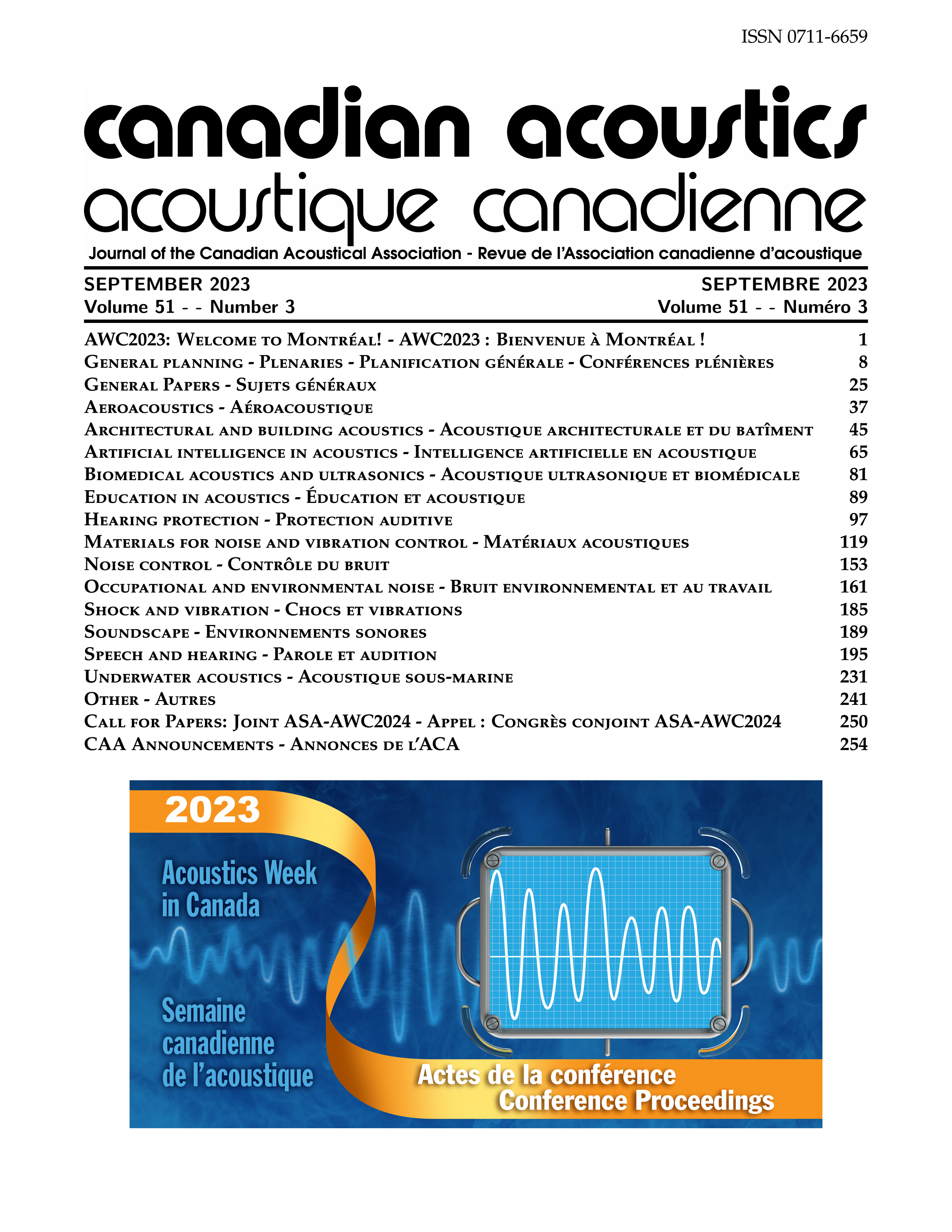Turbulence Distortion Effect on Leading Edge Noise from Wind Turbine Blades
Abstract
Turbulence distortion is a potential source for production of flow induced noise and rely on the turbulence properties of aerodynamic flow field. Particularly in wind energy applications, the broadband leading-edge noise from rotating blades becomes significant when the turbulence intensity (TI) and integral length scale factors vary with mean flow velocity and rms velocity fluctuations. The inflow noise generated at leading edge of blade also varies significantly with turbulence characteristics of velocity spectrum that describes the turbulent kinetic energy envelope. Although previous studies on flow induced noise that includes turbulence distortion have accounted for symmetric and cambered airfoils, it has not been investigated for rotating blades as found in wind turbines. In this work, leading edge noise predicted by modified rapid turbulence distortion (RDT) model proposed by Faria et al (2022) is applied and compared with noise levels predicted by Moriarty model for a 2MW model wind turbine blade. For low frequencies in sound spectra, 50Hz < f < 200Hz the sound power predicted by both models agreed within 2-5% with experiment data of a SWT 2.3MW wind turbine blade which has tip speed of ~83 m/s. However, for mid-band frequencies 250Hz < f < 1kHz, the modified rapid distortion model scales the turbulence properties in velocity spectrum more accurately leading to better estimation of noise levels. The modified RDT model has also been tested for different turbulence intensities and found that as turbulence intensity increased, the standard error for noise predicted by modified RDT model reduced by 1% in low frequency region of sound spectrum. This trend is not observed in case of Moriarty model and on contrary noise levels were found to increase.Additional Files
Published
How to Cite
Issue
Section
License
Author Licensing Addendum
This Licensing Addendum ("Addendum") is entered into between the undersigned Author(s) and Canadian Acoustics journal published by the Canadian Acoustical Association (hereinafter referred to as the "Publisher"). The Author(s) and the Publisher agree as follows:
-
Retained Rights: The Author(s) retain(s) the following rights:
- The right to reproduce, distribute, and publicly display the Work on the Author's personal website or the website of the Author's institution.
- The right to use the Work in the Author's teaching activities and presentations.
- The right to include the Work in a compilation for the Author's personal use, not for sale.
-
Grant of License: The Author(s) grant(s) to the Publisher a worldwide exclusive license to publish, reproduce, distribute, and display the Work in Canadian Acoustics and any other formats and media deemed appropriate by the Publisher.
-
Attribution: The Publisher agrees to include proper attribution to the Author(s) in all publications and reproductions of the Work.
-
No Conflict: This Addendum is intended to be in harmony with, and not in conflict with, the terms and conditions of the original agreement entered into between the Author(s) and the Publisher.
-
Copyright Clause: Copyright on articles is held by the Author(s). The corresponding Author has the right to grant on behalf of all Authors and does grant on behalf of all Authors, a worldwide exclusive license to the Publisher and its licensees in perpetuity, in all forms, formats, and media (whether known now or created in the future), including but not limited to the rights to publish, reproduce, distribute, display, store, translate, create adaptations, reprints, include within collections, and create summaries, extracts, and/or abstracts of the Contribution.


